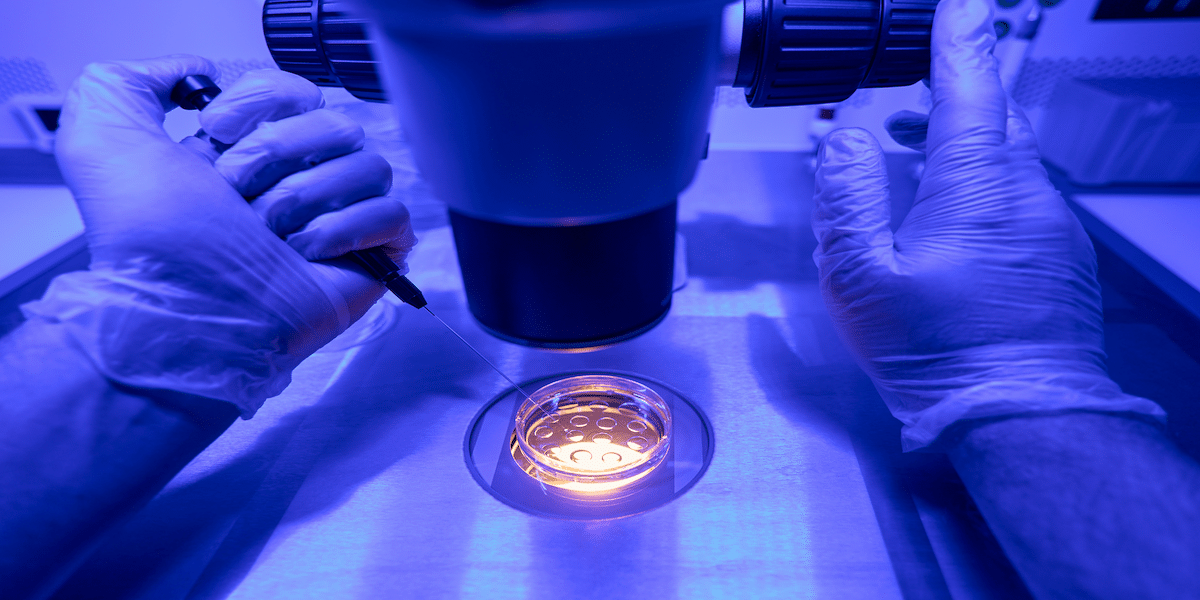Image commercially licensed from Unsplash
In the realm of in vitro fertilization (IVF), selecting the most viable embryo for transfer is a critical decision faced by clinicians and embryologists. The abundance of embryos created during a cycle or attempt does not guarantee a successful pregnancy. Implanting too many embryos can lead to risky multiple gestation pregnancies. To strike a balance between increasing the chances of success and minimizing the risk of multiple gestations, the careful selection of the optimal embryo becomes paramount. Renowned expert, Dr. Ian Hardy, sheds light on this crucial aspect of IVF.
The Importance of Embryo Selection
Dr. Ian Hardy, experienced in Reproductive Endocrinology and Infertility, emphasizes the significance of embryo selection. “Embryo selection plays a pivotal role in the success of IVF. It involves evaluating the quality and viability of embryos to identify the ones most likely to result in a healthy pregnancy,” he says.
Traditional Techniques: Morphology and PGT-A
Two commonly employed methods for assessing embryo quality are morphology evaluation and preimplantation genetic testing for aneuploidies (PGT-A). Morphology evaluation involves visually examining embryos under a microscope to assess their appearance and developmental stage. PGT-A, on the other hand, helps identify chromosomal abnormalities in embryos before transfer. While these techniques have proven valuable, recent advancements, including the integration of artificial intelligence (AI), have the potential to revolutionize the field.
Dr. Hardy’s Contributions: Assessing Oocyte and Embryo Quality
Dr. Hardy’s patent, “Process for Assessing Oocyte and Embryo Quality,” granted in 1994, serves as a valuable reference point for understanding the evolution of embryo assessment methods. His groundbreaking research paved the way for innovations that have brought us closer to selecting the most viable embryos for successful pregnancies.
The Role of AI: A Summary from Fertility and Sterility
A comprehensive summary published in the medical journal Fertility and Sterility discusses the emerging role of AI in embryo selection. The article highlights the development of new technologies, such as the utilization of cell-free DNA from blastocoel fluid and spent media, as potential tools for embryo assessment. However, further research is required before these techniques can be widely implemented in clinical practice.
Harnessing Time-Lapse Imaging and AI
The integration of time-lapse imaging with closed embryo culture systems represents a promising avenue for research. These systems generate a vast amount of imaging data, enabling the identification of subtle features of embryo development. While some studies have suggested the potential benefits of analyzing individual morphokinetic parameters and their association with embryo ploidy, consistent results across studies have yet to be established.
Novel Embryo Features and AI: The Study by Bori et al.
In a recent study by Bori et al., novel embryo features were identified as predictors of implantation potential when used as input data for an artificial neural network (ANN) model. These features encompassed parameters such as pronuclear migration distance and speed, blastocyst expanded diameter, inner cell mass area, and trophectoderm cell cycle length. The study demonstrated that an ANN model incorporating both conventional morphokinetics and novel embryo features improved predictive ability, achieving an area under the curve (AUC) of 0.77.
Further Validation and Real-World Context
While the results of the study by Bori et al. are promising, Dr. Hardy stresses the importance of further validation, particularly in prospective settings and with a broader IVF population. Evaluating AI-based embryo evaluation in real-world contexts is essential to assess its performance and applicability. Factors such as patient age and infertility diagnosis need to be considered to optimize model development and ensure its effectiveness across diverse patient populations.
Comparing AI-Based Evaluation and Conventional Methods
To ascertain the superiority of AI-based evaluation, comparisons with conventional morphology assessments, with or without PGT-A, are crucial. Dr. Hardy emphasizes the need for rigorous research to evaluate the effectiveness and reliability of AI in the context of embryo selection. While AI shows promise, it should be viewed as a powerful tool that enhances existing practices rather than a standalone solution.
Implications and Future Directions
Dr. Hardy highlights the potential implications of AI in the field of IVF and emphasizes the ongoing need for research and refinement. “The integration of AI into embryo selection has the potential to revolutionize the field of IVF. However, it is crucial to continue rigorous research and validation to ensure the reliability, accuracy, and clinical applicability of these technologies,” he remarks.
Dr. Ian Hardy: A Pioneer in Reproductive Medicine
Dr. Ian Hardy‘s academic and professional accomplishments, coupled with his passion for advancing reproductive medicine, position him at the forefront of innovation. His commitment to improving the lives of individuals and couples facing infertility challenges remains unwavering. With ongoing research and collaboration, the field of embryo assessment continues to evolve, offering hope and opportunities for prospective parents seeking to build their families.

















